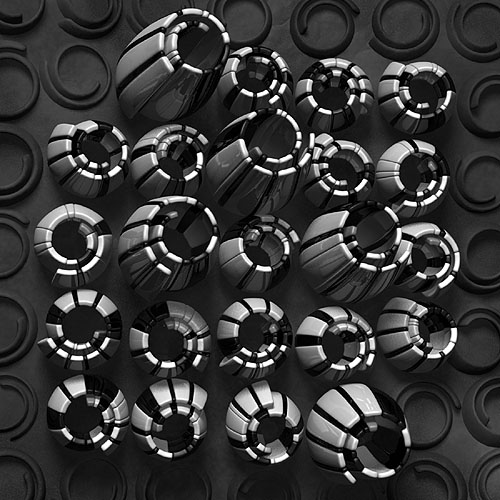MichelleMa-LookingOutwards-2
I based my Looking Outwards subjects on the generative art I read about in Form + Code by Casey Reas, Chandler McWilliams, and LUST. Thanks for lending me the book, Golan!
“Malwarez” by Alex Dragulescu (2007) analyzes the source code of malware and viruses and generates 3-D forms to model the information found in the codes. The forms almost resemble biological pathogens, and the artistic rendering of found patterns adds wonder and mystique to the subject matter. His concept of presenting invisible data into familiar, organismal is really amazing. On the other hand, the simulations might be more effective if the colors and the shapes were more imposing to instill a sense of threat in the viewer. I certainly feel the fact that only this artist could generate these pieces through his knowledge and experience with visualizing code. I can almost imagine his whole collection of works compiled into a visual encyclopedia about data.

In the piece “EPF:2003:V:A:997141“, Kenneth A. Huff incorporates the properties of prime numbers into each 3-D structure. According to his website, Huff is very knowledgeable in utilizing prime factors in math visualizations. And because I am not a mathematician, I cannot begin to fathom the elegance and beauty of the world derived in numbers. That’s why I really love how his piece shares his vision of the world. However, I think if he was trying to teach the viewers how essential and beautiful prime numbers can be, I think he could have made the visual impression more dramatic. I don’t mean that he has to make it flashy or colorful, but he could have channeled the voice of the piece from, “Look what numbers can do,” to “LOOK! THIS is the work of numbers!”
Hopefully that makes sense.

“Being Not Truthful” by Ralph Ammer and Stefan Sagmeister (2006) is a really thoughtful and thought-provoking installation piece. When a person’s silhouette passes through the spiderweb projected on the screen, the web rips, but gradually mends together again. Immediately the viewer can figure out through the interaction that the piece represents a sort of fragility, and emulates how a spider continues to mend its web despite this fact. Their inspiration for the piece comes from how a maxims like the one written on the web are used despite how vulnerable it may be. Metaphors about fragility are far and wide, but I really like this piece because the interaction forces a viewer to acknowledge it. I would like to see different versions of this web in many places and in different contexts.
